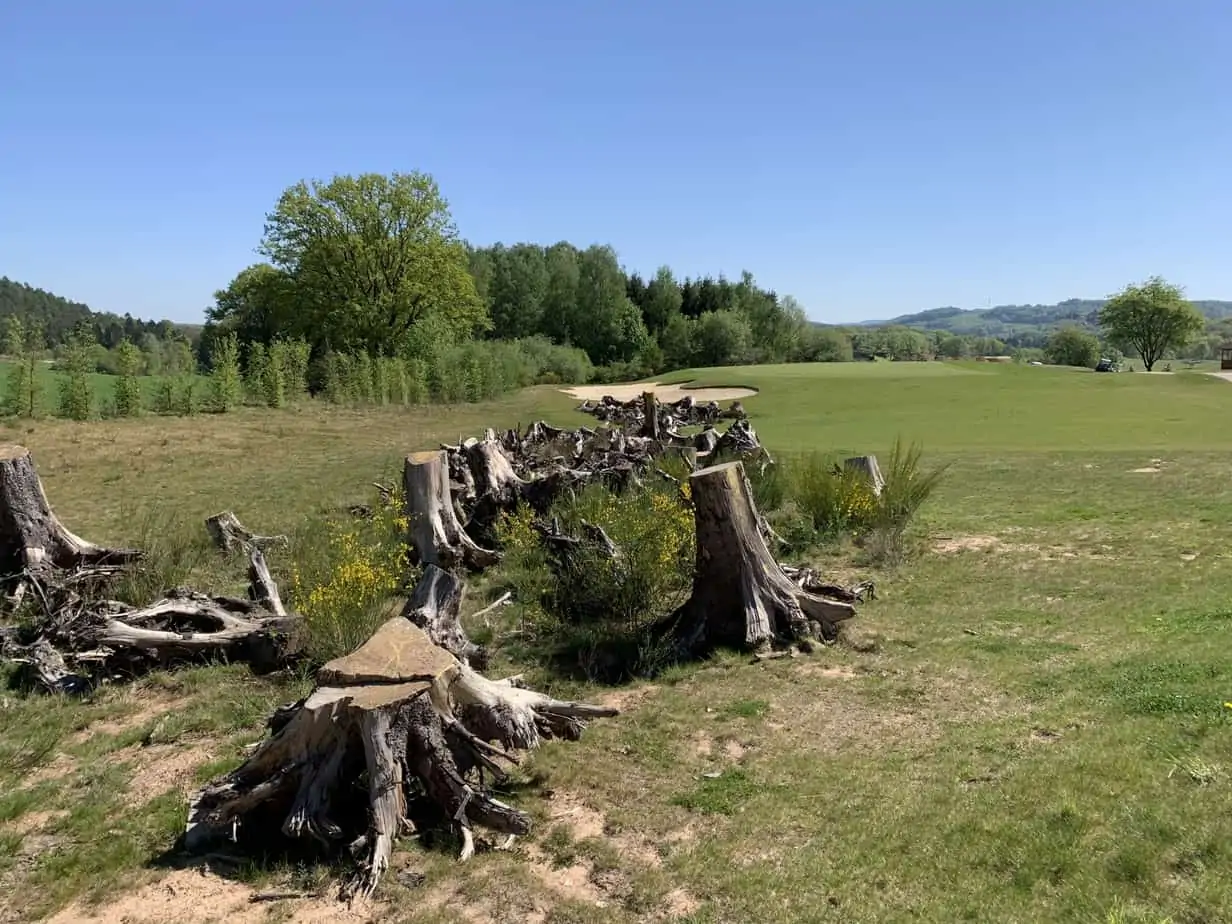Deadwood habitat: A universe for insects
What used to be considered a mess on golf courses has now become standard practice: Deadwood can be found again and again next to fairways, in rough areas, between woody plants. On golf courses, managers and greenkeepers have realized that tree trunks, roots and branches can be their own little universe for microorganisms and insects. Deadwood is important as habitat and is easily created on golf courses. After all, trees keep dying, storm damage causes broken branches, and lumber accumulates during remodeling projects.
Part of the golf course design
Even in the field of golf course architecture, deadwood now plays a role as a design element in its own right: mighty roots, scattered beyond the fairways in the grounds of Golfpark Weiherhof (photo), are the dominant visual element of an entire course. Deadwood, according to Munich golf course designer Thomas Himmel , is increasingly being placed as part of the near-natural design of compensation and water areas to provide habitat for insects, birds and fungi. This includes intentionally placing it in ponds or water hazards.
Nature conservation associations value dead wood
NABU or nature conservation authorities who accompany the new construction or conversion of a course always point out the ecological value of deadwood, which, however, was often understood by the golfer himself in the past as “not cleared away” or as a “mess,” Himmel explains. “At the Weiherhof we had a relatively large number of tree stumps available because a spruce forest that was not valuable was cleared for the expansion of the site. With the help of NABU we distributed the dead wood over the entire facility. Much of it is not in sight because it is well outside the playing area.”
Dead wood serves as a host for insects, fungi grow on it and birds use it to build nests. In this respect, trunks that protrude from the water are often not only visually attractive, but also useful for the promotion of various animal species. However, one has to differentiate: Deadwood is definitely different in terms of its ecological value. Insects prefer oaks or willows as habitats, and a particularly large number of insects can be found on beech and spruce. Therefore, if you are thinking about using deadwood on the golf course, you should also consider the following factors:
- The decomposition process of the wood varies depending on the tree species. It lasts up to 80 years for oaks, but only 10 to 20 for poplars, willows and birches. Beech and pine lie in between at 30 to 50 years. The longer it takes to decompose, the better for supporting microorganisms.
- The larger the tree trunk , the more bird species can nest there. Large birds have no place in slender tree trunks. In addition, larger beetles also need enough nutrients over a long period of time, which is more likely to be found in large trunks. The same applies to the moss: the thicker the trunk, the longer the decomposition time, the more nutrients are available.
- The microclimate in the deadwood, which provides moisture inside and thus protects amphibians and snails from drying out in winter, is also determined by the size and location.
A little science in itself. In general, however, the following applies: the use of deadwood creates ecological habitats in any case. A single tree stump or trunk is used in many ways by plants and animals. And: Deadwood can – if used correctly – also add visual value to a golf course. At GC Wiesbaden, for example, a Benjes hedge serves as a visual finishing touch to an entire hole. At Frankfurt GC – as at numerous other German golf courses – so-called habitat trees now tower into the air. These are dead trees that are just left until they rot and fall over. As long as they become a habitat for insects. And that for decades.
At the Golf & Country Club Zurich in Switzerland, deadwood was lowered into the water to improve the ecological value of a pond.








